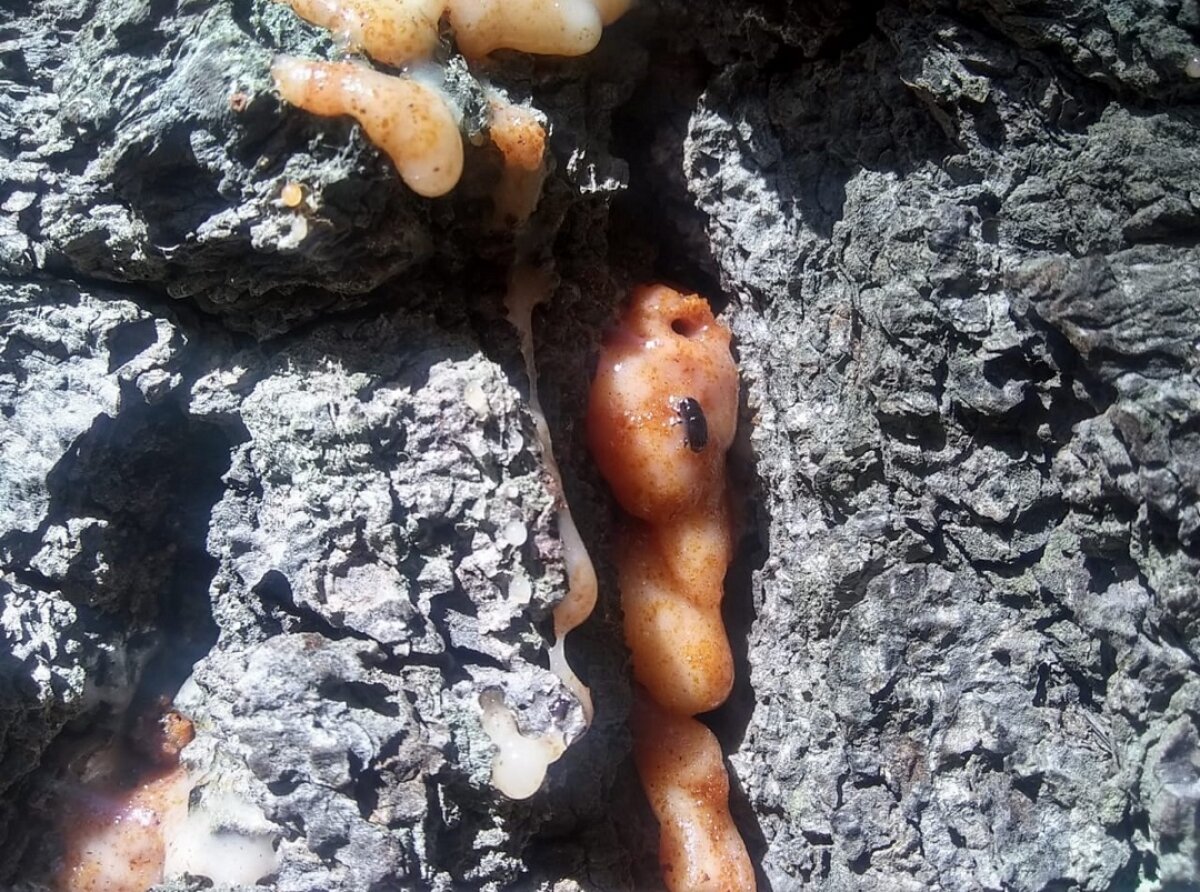Bark beetles, which are small beetles that mainly live under the bark of conifers, are one of the pests that most affect trees.
They feed on the tissue that carries nutrients to the tree, frequently causing its death.
In a controlled environment they play a regulatory role in temperate forests, since they are biological agents that are responsible for eliminating weak or diseased trees, thus leaving stronger individuals that will give way to trees with better genetics and therefore with greater adaptations to weather conditions.
However, when in temperate forests there are continuous forest fires, immoderate logging, effects of climate change, droughts, expansion of the agricultural frontier, among others, are factors that disproportionately increase the population of these small beetles. The trees then become ill on a large scale, causing massive mortality, as has been happening in the northern hemisphere of the world. Historically, the largest bark outbreaks have occurred in the transversal Neovolcanic Axis, an area that coincides with the greatest diversity of pines.

Unfortunately, Mexico has not been the exception. According to the National Environmental Information System, during 2013, 12% of our forests presented bark beetle outbreaks, particularly the state of Durango where they occurred in 25% of its pine forests, while in Chihuahua 18% of its temperate forests were also affected.
The National Forestry Commission (CONAFOR,) has an area in charge of dealing with problems caused by pests and diseases in terrestrial ecosystems, which is the Forest Health program, and among its main actions is attention to the bark beetle.
The actions to carry out the control of bark infesting insects are regulated by the Official Mexican Standard NOM-019-SEMARNAT-2017, which mentions that the diseased tree must invariably be felled, in order to ensure that these insects do not migrate to nearby trees.
Depending on the situation and the type of insect, in some cases it must also be chopped, debarked, burned, chipped, or applied a chemical to tips, branches, and trunk.
In order to reduce the impact on temperate forests by debarkers, it is essential to identify the areas of greatest risk in order to propose measures to reduce the effects, since the debarking insects represent a negative feedback cycle with a strong impact on temperate ecosystems, which can continue to rise in temperature and deepen in drought.

Protected Natural Areas
In the protected natural area La Montaña Malinche, or Matlalcuéyatl National Park in Tlaxcala, there are various problems of deterioration of forest resources, among them the presence of active outbreaks of debarking insects with antecedents since 2010.
Its control has been made difficult by restrictions to knock down the affected trees. Also the fragmentation of land, and the lack of definition in land tenure, has made immediate attention difficult, in addition to the agricultural burns and the illegal logging that favors the spread of the pest by not receiving adequate treatment to surviving trees.
It is reported that CONAFOR in Tlaxcala received during the years 2020 and 2021, a total of 141 notices of the possible presence of debarking insects, giving them attention to confirm the presence of the pest.
Of the notices that proceeded, 113 notifications were issued to the owners or possessors of the forest lands in order to carry out sanitation work on 572.34 hectares, of which 514 of them are estimated to have been cleared. The verification of 28 additional notices is in process and if they are positive, the same process will be carried out to provide timely attention to minimize damage to forest ecosystems.
Among other procedures to control and combat debarkers is the demolition of infected trees to prevent the growth of insect populations and reduce their impact on tree mortality.
The attention is given through the State Technical Committee for Forest Health of the State of Tlaxcala, which implemented the Incident Command System led by CONAFOR.
In each cleared land, CONAFOR will monitor the restoration activities that the owner or possessor must carry out, in accordance with the provisions of the General Law on Sustainable Forestry Development.

Within the forests of the Monarch Butterfly Biosphere Reserve protected natural area are a high percentage of trees of advanced age, which together with the effects of climate change and the presence of parasitic plants, make the fir forests more and more susceptible to the affectation of debarking insects.
A coordinated manner with the ejidal authorities and the three levels of Government is how the problem has been addressed. The places where it has been worked is within the forest lands of 51 ejidos and communities of Michoacán located in the municipalities of Angangueo, Aporo, Contepec, Ocampo, Senguio, Tlalpujahua and Zitácuaro; and in the State of Mexico in 49 properties that include ejidos, communities and small properties in the municipalities of Donato Guerra, Temascalcingo, San José del Rincón and Villa de Allende.

